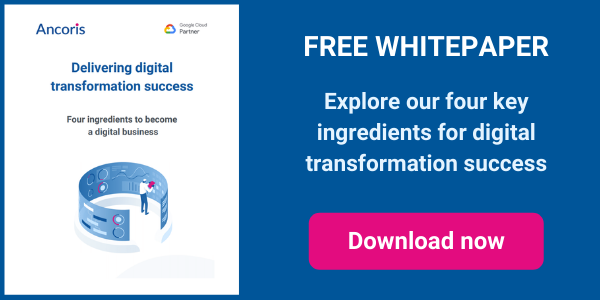Application Programming Interfaces (APIs) allow you to quickly build rich, connected apps for your employees, customers and partner network, by calling on features from other applications. APIs power almost all the innovative apps that are allowing businesses to deliver digital transformation strategies, compete more effectively, exploit new revenue streams, and even create new business categories.
 Here are some examples of how companies across a range of industries have used APIs to build their business:
Here are some examples of how companies across a range of industries have used APIs to build their business:
- Bizzby uses several Google Maps APIs to power its mobile app, which allows users to book professional tradespeople such as handymen, cleaners or beauticians and have them arrive at their door in 60 minutes or less. The Maps APIs allow Bizzby to track its service providers in real time, identify the best person for the job, and – combined with Bizzby’s own algorithms – calculate how long it will take the chosen service provider to get to the customer. Customers who use the app can book a service, get availability and confirmation of the provider — all in real time — and receive continuous updates on where the provider is and when they’ll arrive. A particular benefit of using Maps APIs is that Bizzby doesn’t have to worrying about the performance, scalability or coverage of the infrastructure that’s delivering the map-based features in its app.
- Rentokil has used APIs to bring together various cloud-connected resources to create an Android-based app that gives the company’s 14,000 pest control technicians a digital floor plan for each site, complete with up-to-date information on which pest control products have been installed and their precise location. The app combines off-the-shelf solutions for creating and viewing floor plans, and for reading QR codes and barcodes on pest control products, with APIs for Android capabilities such as SatNav, Photos, Geo Location, GyroScope and Speech to Text. By replacing unreliable paper-based floor plans and cumbersome back-office systems with the app, the company has been able to increase the efficiency of its operations and improve customer and employee satisfaction. It can also now send technicians with no prior knowledge of a site and deliver the same quality service, helping it deploy its workforce more flexibly. Finally, the app is delivering a competitive advantage in this highly regulated market by providing the foundation for Rentokil’s Digital Pest Control vision: linking to the company’s PestConnect IoT solutions to create an end-to-end digital ecosystem.
- Ocado, the online grocer, is using the Google Cloud Natural Language API in its contact centre to automatically tag incoming emails based on their content. Ocado can then determine from the tags how urgent each email is and prioritise it in the queue, rather than handling everything on a “first in, first out” basis. This is helping it to deal with spikes in email traffic, which can double or triple when deliveries are affected by external factors such as bad weather or traffic jams, and allowing it to respond more quickly to customers who have an urgent request or are unhappy. Urgent emails are now dealt with four times as quickly as less urgent ones, and three times as quickly compared with the previous approach. Ocado has also been able to redeploy 4 FTE staff because it no longer has to review every email manually before processing it.
- The New York Times is using the Google Cloud Vision API to capture extra information from the images stored its its digitised photo collection. Photographs are often accompanied by descriptions, dates and other details, typically in the form of a mishmash of captions and headlines pasted on to the back of the print. The Cloud Vision API can detect this text, allowing the newspaper to automatically tag and index images so they can be more easily searched and found.
- Energyworx has created its own API to let customers access and analyse the information it gathers on energy usage. Utility companies, for example, can use the Energyworx platform to plan for peak electric demand throughout the year, while businesses can find out which of their facilities use the most energy. The whole Energyworx platform runs on Google Cloud, with the Energyworx API running on Google’s App Engine. This enables Energyworx to instantly scale to meet demand and to charge customers only for the time they use the API. Naturally, Energyworx also uses numerous APIs when gathering the data that powers its platform, linking to multiple sources, including the national energy grid, IoT devices and sensors, energy-generation facilities, office buildings and manufacturing plants, and apartment complexes and individual homes.
APIs are a key element in our own work at Ancoris, whether we’re helping customers architect the infrastructure that will deliver their digital transformation strategy, or using agile development to quickly build powerful solutions for frontline workers or customer. To find out more about how APIs can help you can solve your operational challenges, come and talk to the experts on our Digital Transformation team.
